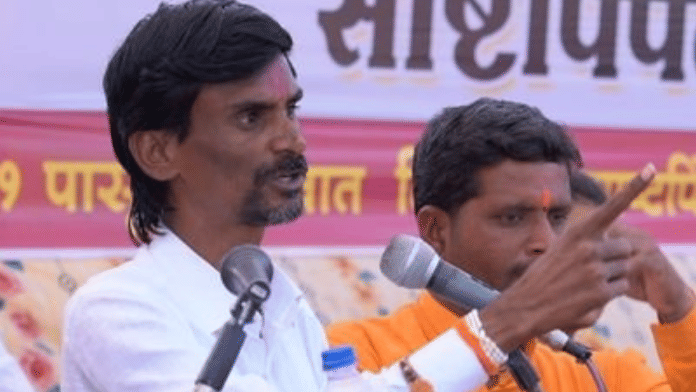Mumbai: Manoj Jarange-Patil, the Jalna-based activist who has emerged as the face of the renewed Maratha reservation agitation, is looking to establish his leadership in the community across Maharashtra as he prepares to tour the state from 15 November.
The tour aims to maintain momentum while helping Jarange-Patil understand the issues facing the Maratha community — especially the youth — and the state, according to those associated with the agitation.
This will be the third phase of Jarange-Patil’s agitation. It will begin from Vashi in Dharashiv and will culminate in Shegaon in Ahmednagar on 23 November. Organised under the banner of the Sakal Maratha Samaj, Maharashtra, this phase will primarily cover Thane, Raigad and Western Maharashtra.
The activist had earlier visited parts of Western Maharashtra before he went on a hunger strike last month during the second phase of the agitation.
“We have kept small meetings at the village level, which can turn into a bigger public meeting. Our messaging is simple, we have already given a deadline to the government and if the government doesn’t adhere to the deadline, then we will sanction Mumbai and will not let Mumbai function,” said Shriram Kurunkar, one of the organisers of these meetings.
“Since we got a good response last time, we are hoping that the response will be better this time,” he added.
According to Balasaheb Sarate, a Maratha reservation researcher who is following Jarange-Patil closely, the tour is about “meeting the community, having a dialogue with people, boosting their confidence, instilling faith within them. It is not only about reservation. Jarange also wants to see the state, the condition of the community in various parts of the state. And give them a message that we are united, we should be together in general. He is not there to provoke anyone. In fact his experience will grow, his leadership qualities will grow.”
This comes as the state government works to resolve the deadlock over the reservation demand. With the agitation demanding Kunbi (OBC) caste certificates for Marathas, the government has asked districts to look at land, birth and death records, among others, to identify Marathas who were once Kunbis and publish the details before the deadline to introduce the quota.
Although the government had asked for time until 2 January, Jarange-Patil Thursday said his deadline was 24 December, 2023.
Also read: Related communities with agrarian roots — why Marathas are claiming to be Kunbis amid quota stir
Third phase
The tour will cover districts including Pune, Solapur, Satara, and Sangli in Western Maharashtra, Mahad in Raigad, Thane, and Ahmednagar in the Nashik region.
“It is not a target to cover these regions. These regions were not covered in earlier phases and that is why we are going here,” said Kurankar. “In the next phase, a few days later, we will cover Jalgaon, Khandesh, Vidarbha,” he added.
Jarange-Patil, while speaking to the media on Thursday from a hospital in Chhatrapati Sambhajinagar where he is currently under treatment after ending his fast, urged the community not to give a single rupee for his tour as the tour participants were making their own arrangements
“This agitation is not for earning money but for seeking justice for the poor from the community. If anyone takes a single paisa, the community will not forgive them,” said Jarange-Patil.
According to those associated with the agitation, the activist will also try to gauge the problems the state is facing, and especially the youth of the Maratha community. The tour will also help him build pressure on the ground as he has planned public meetings every day.
This will not be a padyatra, but if there are people who want to meet Jarange-Patil along the way, “We will surely do impromptu meetings as well,” said Kurunkar.
Over the past two months, since the Maratha reservation demand came to the forefront, there have been reports of members of the community, including young people, committing suicide over the issue.
Ganesh Shinde, a close associate of Jarange-Patil who will also be touring the state with him, said: “He will also be talking to the youth as many are dying by suicide. So he has decided to talk to them and discourage them from taking such an extreme step. Also, he is hoping that since the identification is being done at village level, the government will complete the process as early as possible.”
The government on the ground level is scrambling to complete the identification of all Marathas who once belonged to the Kunbi caste by looking through the documents related to their regions — school records, land records, birth and death records, crime records and so on.
The districts have to identify Kunbi references across these documents and publish them in the public domain. In every taluka, there are 300-400 government officials involved in the process of identifying Kunbis.






